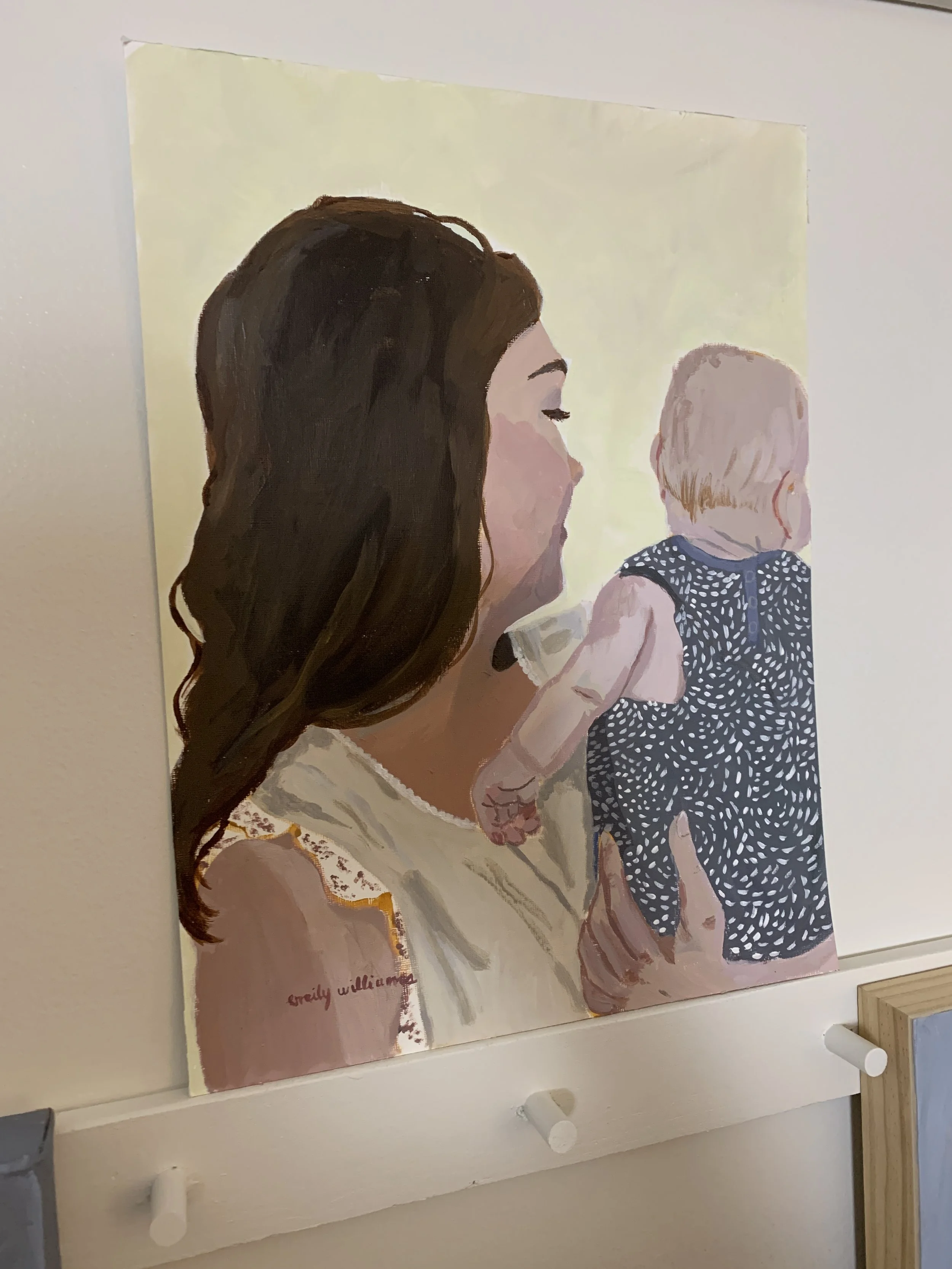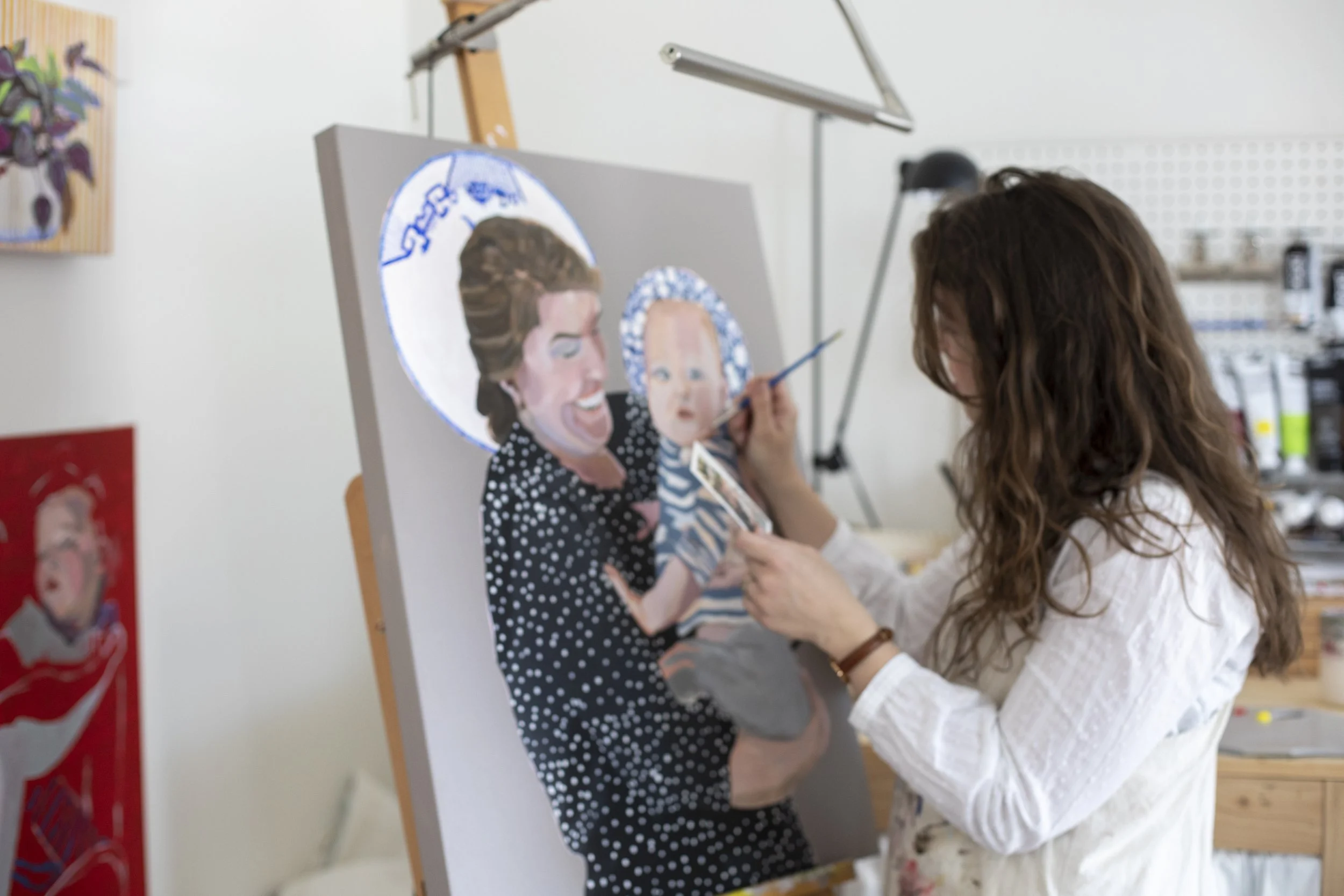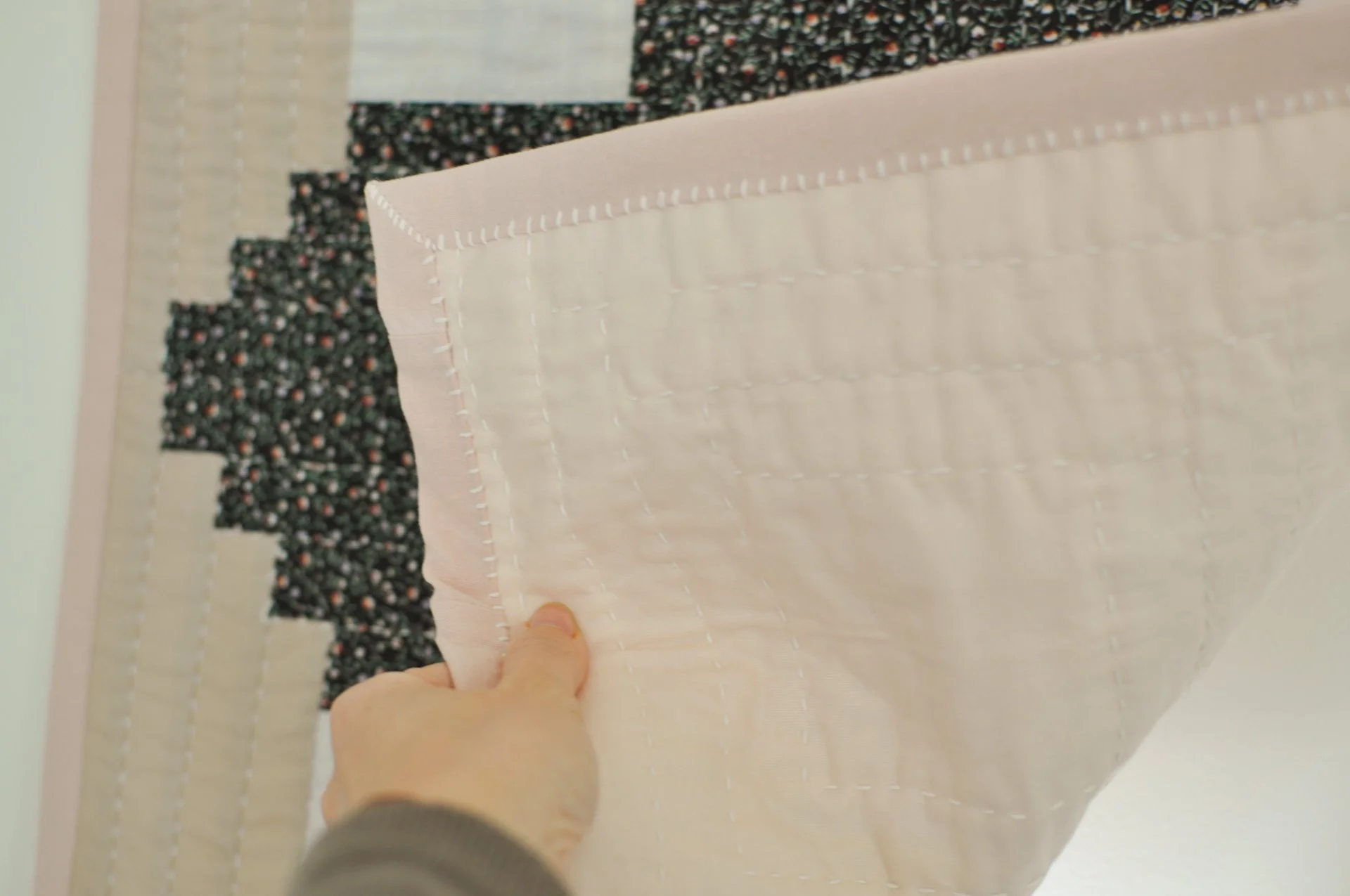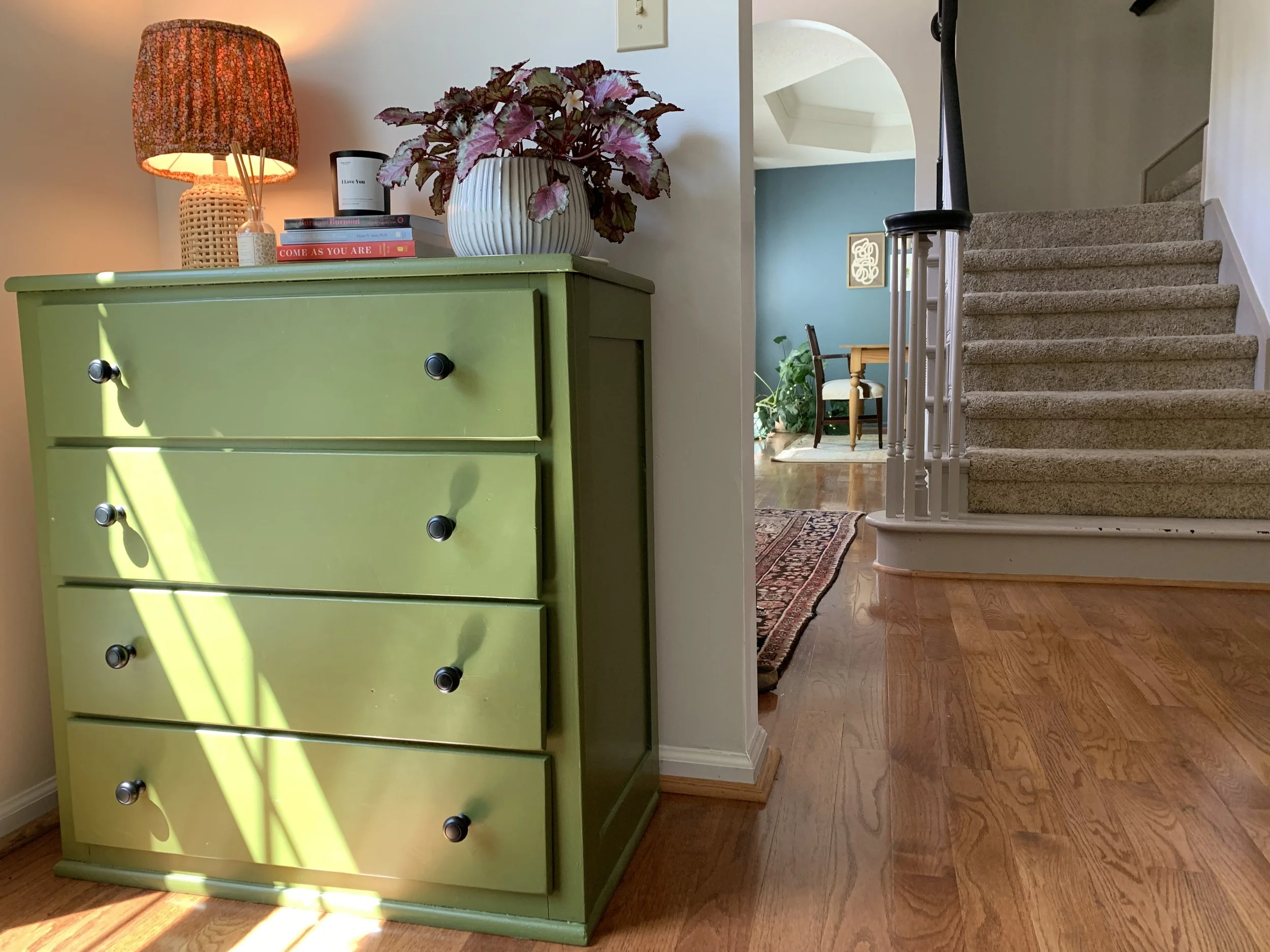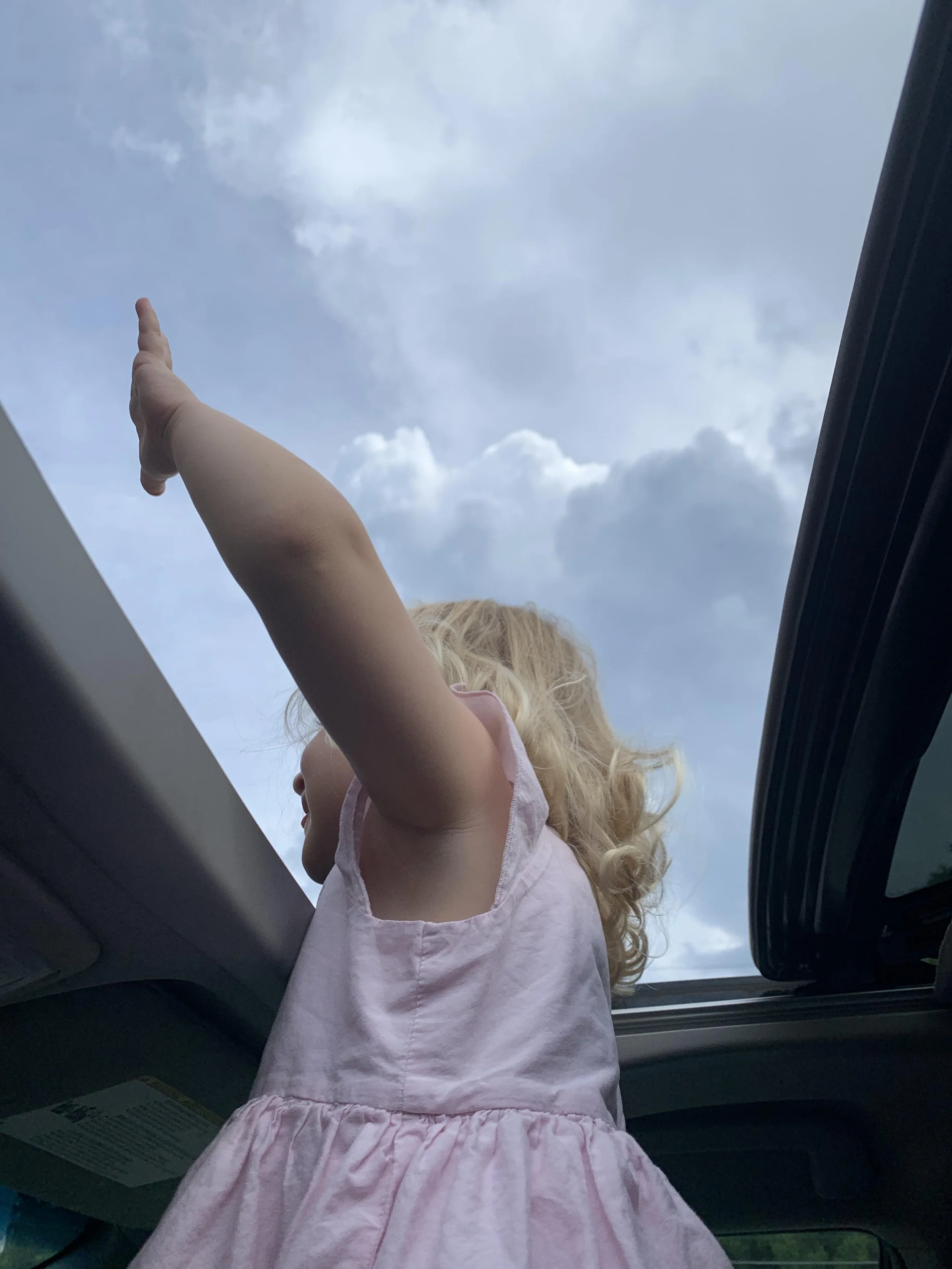Blog
January: The month that brought me my sons + becoming “mom”
“You break and enter my imagination
Whatever’s in there is your to take.”
- Bono
On two consecutive days this month we get to celebrate both of my boys entering the world. On both of those days, 9 and 7 years ago, I changed. Those two events precipitated my life and perspective and physical body being forever bent toward the well being of two humans that I am infinitely glad I get to know. These two January days are absolutely a celebration of two brilliant boys and the progress they make in their lives. But quietly, to myself (except now apparently on a blog post for any stranger to read) I think about how I became a mother on these two days - first to one boy and then to another. And it ripped me apart; first my body and then my consciousness. It brought me to the end of myself, which feels extremely cliché to write. Because that is what everyone says. But nothing else in my existence has taught me as much as motherhood has.
One thing about becoming a parent is that it demands you to rise to the occasion. It asks you to ascend before you know what that means. Yeah, I read books. Yeah, I bought all the baby shit — clothes, diapers, wipes, a crib, a baby tub, a breast pump, a nursing pillow… I had the tools. But when those babies looked up at me, screaming in the middle of the night (wah, wah, wah, wah - I can still hear it echoing in my head) because what if they hadn’t had enough milk or what if their diaper was dirty again or what if they were cold or what if they were overstimulated or what if I just wasn’t enough — I reached the end of my resources so quickly but no one else was going to show up and do what I had to do for that screaming child. And so I ascended. In the dim blue light of many early mornings, I kept rising to the occasion. My anxious, strung out, overtired brain had to keep rising to the occasion for these tiny strangers who only spoke to me with coos and cries.
I watched Nightbitch recently and at one point Amy Adams’ character asks a group of mothers at library story time, “What if we are gods?” Birthing parents create beings within themselves. We multiply. And though I am largely uncomfortable with assigning myself that level of worth and value, I much prefer to see us in a light like that. It’s much better than the condescension that has seemed to be paired with the term “mother” as if keeping the human race going is a lesser task than participating in the workforce. But I feel nothing like a god. I am tired. A cloud forever lives in my brain. I feel like I could stay up forever and still not do everything for my children that they deserve their mother to do for them. I would like to always give them more like a good god would. I’d like to be the best god for them. But that’s where the comparison breaks down. I am limited and I make mistakes and I cannot know their thoughts unless they speak them to me.
It’s no wonder my experience of motherhood is a massive part of my art practice. I can’t stop drawing and painting these children. In the least cliché way, they are my world. Not because I need them to please me or fulfill me, but because I must spend every waking, and sometimes sleeping, moment considering them and their needs. And that makes me different. It attaches me. I will not know a truly carefree moment again. The individual and the mother that are both sides of me are everyday warring. I am restrained. And I cannot stop thinking about the meaning of this. I cannot stop thinking of the value of this. And I’m going to keep working it out on canvases until I understand more of who I’ve become in relation to the beings my body created.
My Quilt Collection + Maternal Heritage
There is some popular advice given to artists that has gotten in my head: that what we make should look “recognizable” or that we should niche down to painting one thing, one way. I now understand that my art practice is hindered by that limitation. I happen to be, on my best days, curious, and on my worst, distracted. So exploring my creative impulses in several mediums has always felt best to me. I can become voracious for a new thing to learn and I will follow that rabbit hole with single-minded focus until I get bored. That kind of learning seems to fuel my creativity with new ideas and new ambitions. Some may call this absolute chaos. But it’s familiar to me and I don’t mind it.
So, after focusing on painting for so long I was finding myself reaching for fabric — work that was less representational and a bit more tactile. But also something much more friendly to my everyday life. I can bring needlework outside of the studio. And this playful, casual experiment has refreshed me. It has been fun to use traditional patterns and play with colors. It’s simple. It’s repetitive. It has been a rest from the skills I’ve been reaching for in my painting practice.
The other part of quilting that still reflects a major theme of my work is that sewing is a skill I’ve inherited from the women in my family. I have two massive quilts in my home that were made entirely by my great grandmother’s hands. She pieced each one together with her needle and thread and quilted them by hand. I have always treated them like art pieces in my home. Ones that we cuddle under to watch a movie or throw on a bed for extra warmth in the winter, but they are always on display. My paternal grandmother was a skilled seamstress and toward the end of her life she began to teach me to use patterns to make my own clothes and left me her sewing machine when she passed. I learned to quilt as a teenager alongside my mom. She would buy books and magazines with patterns in them and I would pour over them thinking about the quilts I wanted to make. We’d walk the aisles at Hancock Fabrics grabbing bolts of fabric and fat quarters that caught our eye — growing a collection of fabric bigger than our actual need.
Quilting has been called “women’s work” or a “handicraft” and we have often neglected to recognize quilters for the skilled artists they are. Which is tragic. They are masterful and devote countless hours to one quilt. And upon seeing quilts we are reminded of the people we know who pour their hearts into making them or for the times quilts covered us and kept us warm. Anyway, I can get existential about it, but to save time, when I quilt I feel like I’m part of a bigger conversation. I’m participating in something that has been going on for hundreds of years, carrying it on into this present time with my hands and my voice. Honestly, what a wild thing that we talk about quilting as a “domestic craft” as if it is a lesser art form.
The technical problem of selling quilts is that because of the hours of labor and skill they require to make, they can get quite pricey. I’m sticking to small quilts that are meant to be hung to keep them at a reasonable price and because they feel very much like a sketchbook page to me. These quilts are really just color studies. They are an exploration. I’m not trying to make them long winded and huge. They are meant to be brief and easy going.
I’m looking forward to continuing to make these small quilts and sharing them with you. Do you have a favorite? Or is there are person in your life that quilts? What is one of your most vivid memories of that person and their work?
“The Process” + Studio-less Summers
Unsurprisingly, I haven’t lifted a paintbrush this summer. School ended just before May did and ever since it has been all kids, all the time. Which is, perhaps, just what we needed…
Unsurprisingly, I haven’t lifted a paintbrush this summer. School ended just before May did and ever since it has been all kids, all the time. Which is, perhaps, just what we needed. But it is also kind of soul crushing to neglect paintings in my studio that are in the messy middle. Despite that, it is OUTSIDE of my studio that I gather the most inspiration and “inspiration” has come in the form of reading this summer. Each time I’ve finished a book I’ve immediately picked up a new one. And maybe that isn’t unusual for me, but I feel voracious for stories recently.
The book I just finished was Finding Freedom by Erin French, a memoir about her becoming a cook and coming to own her restaurant, The Lost Kitchen. I love a good memoir. But this one I read because this woman inspires me…I own her cookbook and I wanted to know her story. And I feel immensely inspired as I close the beautiful back cover of this book and put it on the shelf. She has taught me something valuable that I have to keep learning over and over…if you believe in something and if you love it, don’t quit.
As much as a break from the studio can be refreshing, a months long break from the studio is disorienting. And as the days slip by, my thoughts during idle moments, like after I turn off the light and lay down on my pillow, turn to self-criticism. “I’m not good enough to keep going”, “no one cares what I have to say”, “I don’t have a unique story to tell”…yada, yada, yada. On my best days I feel like I live up to the meaning of my name, “industrious” -- I have accomplished much with what I have. But on my worst days, I feel like a phony -- for all the work I have put in, I have nothing of value to show for it.
I realize this self-doubt is perhaps one of the most normal parts of the human experience. It is something you have to learn to live with and have strategies to disarm. One of my more effective strategies is writing down quotes from other people or myself that directly address my most sensitive concerns. I display them in my studio so they confront me every time I paint. There are certainly a few quotes from Erin French that I will add to my arsenal. But there is one from Josh Garrels, a musician that I followed closely when I was just starting to paint, that I keep handy and that Erin French may also appreciate: “If you bypass the process, the end result will be faulty. It won’t stand up. If you bypass the process, your work will suffer.”
It is “the process”, the messy middle, the years of quiet work that no one sees, the hours and hours of learning, the pages and pages of bad drawings, the trying and failing and trying again that make the end result worth something. And let me tell you, I’ve been at this for years. It is “the process” that fills all of my days. It is “the process” that I am always living in. And it is “the process” that sometimes makes me weary. I wish I could fill my Instagram with finished paintings every day. But doing so would come at a cost. The paintings would be faulty. I can’t bypass my process. I don’t want to turn out easy paintings for fast money. That isn’t what I’m doing here. Like Erin French, I want to create a feeling in the person who encounters my work. I want it to tell a good story. And I want it to be worthwhile.
So it seems, with three school-aged children in tow, summers outside of the studio will be part of my process. And I am sure in time I will learn how to use them wisely.



